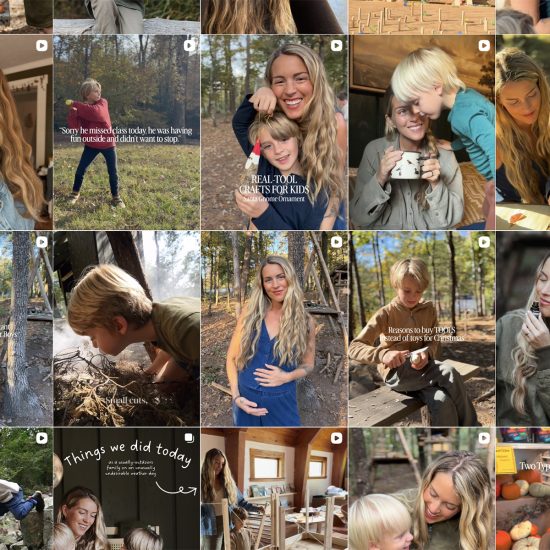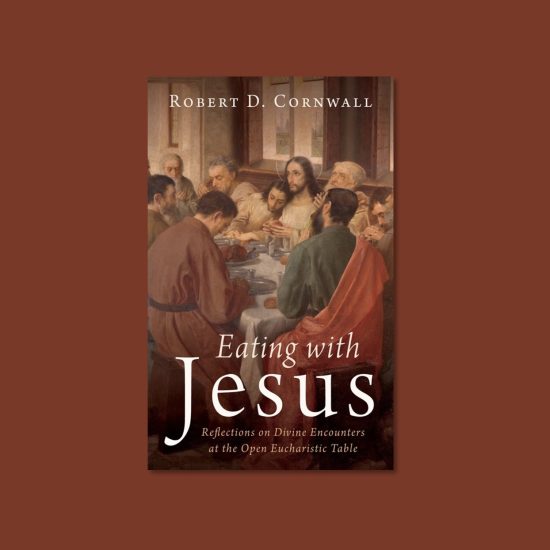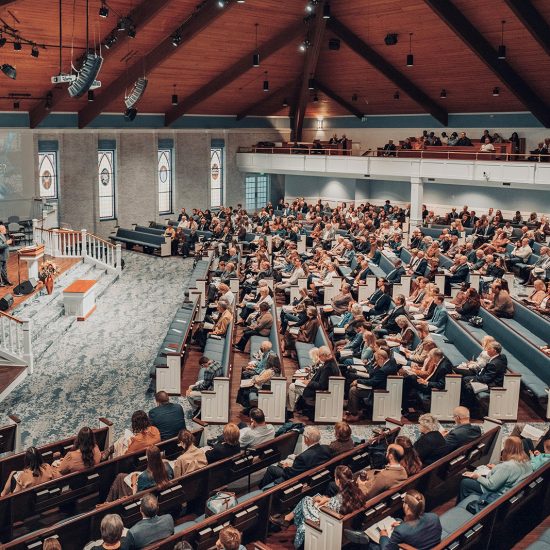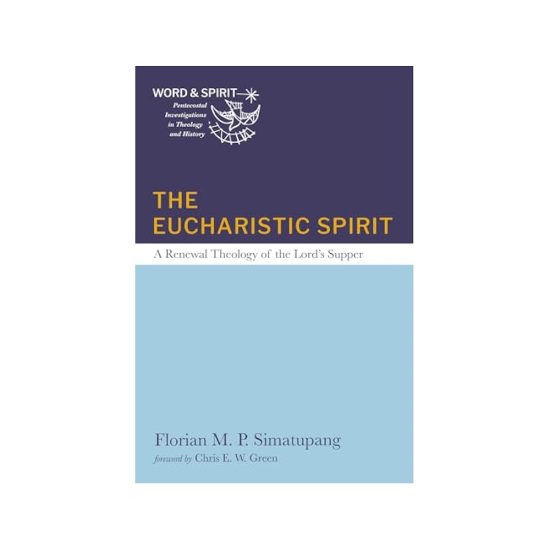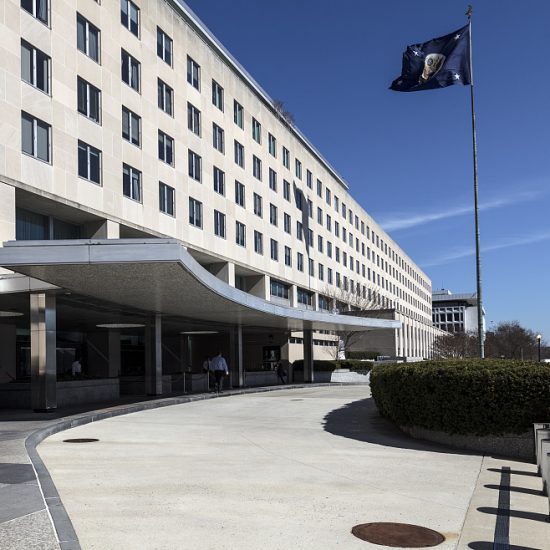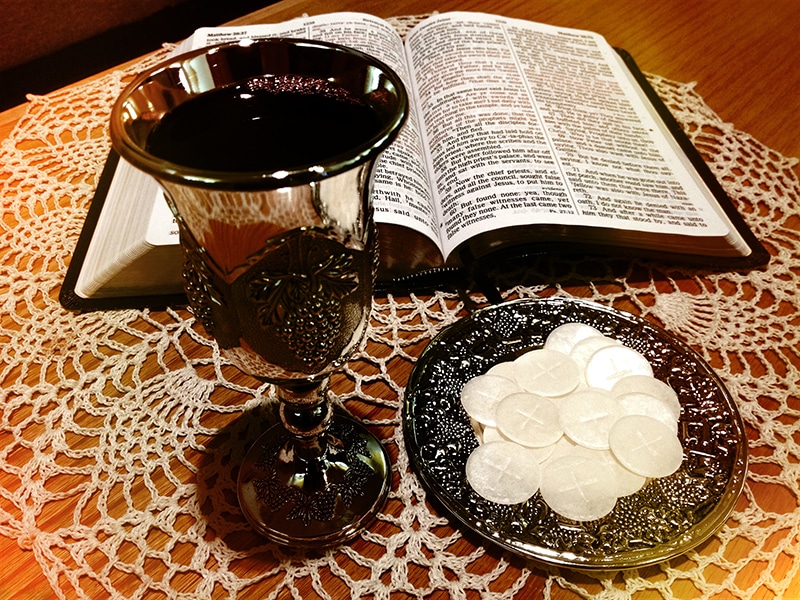
More than any other time of the year, Baptists observe the Lord’s Supper during Holy Week services, ranging from Palm Sunday to Maundy Thursday (when Jesus started the practice) to Good Friday to Easter Sunday. But with coronavirus leading churches to suspend in-person services, many Baptist churches are experimenting with virtual Communion times as congregants gather their own bread and juice — or other food items to represent the body and blood.
As of April 9, nearly 1.6 million people globally have been infected with the COVID-19 respiratory disease caused by coronavirus, and more than 94,000 have died. In the U.S., the country with the highest number of infected persons, more than 450,000 have tested positive and more than 16,000 have died.
David McDaniel, senior pastor at Holmeswood Baptist Church in Kansas City, Missouri, told Word&Way about the experience of trying a virtual Communion time during their Palm Sunday service on April. 5. Since they usually observe the Lord’s Supper on the first Sunday of each month, this marked the first time they did so since suspending services due to coronavirus. He said that for them the question wasn’t should they observe Communion but how.
“We decided to emphasize the theology of incarnation during Communion,” he said before adding that raised new questions about the elements to use.
“On one hand, there is nothing inherently holy or sacred about the particular elements used for the body and blood of Christ. Whether it is a saltine cracker or pita bread, or Welch’s grape juice or a fine cabernet, at the end of the day, it is a cracker and it is juice,” he explained. “On the other hand, with an incarnational perspective, everything is sacred and holy. It is more than just a cracker or wine because Christ is in the midst of all of creation, including these diverse elements.”
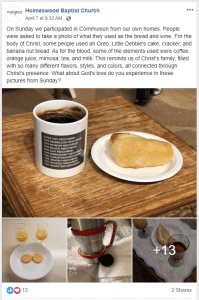
Screengrab of Facebook post by Holmeswood Baptist Church featuring photos submitted by congregants of their Communion elements on Palm Sunday.
Thus, McDaniel said, Holmeswood encouraged members to “gather any type of bread and drink from their kitchen.” And they asked people to share a picture of the elements on the church’s Facebook page.
“As I looked through the various photographs, I was reminded of Christ’s diverse and inclusive love found in so many different styles, flavors, and colors — all containing the elements of Christ. The photo album was a portrait of gospel to me,” he said. “Various types of bread included a Little Debbie’s cake, an Oreo, and homemade bread, while the blood of Christ was represented with coffee, mimosa, and milk. In the service, I asked people to break their own bread in remembrance of Christ’s broken body and the same for the juice as Christ’s blood. And then I emphasized finding the sacred in the ordinary.”
As churches grapple with the question of a virtual Lord’s Supper, many denominations have recently offered official guidelines on the practice. The Evangelical Lutheran Church in America discourages online Communion, while both the Presbyterian Church USA and United Methodist Church changed from suggesting against it to saying it was okay during emergencies like a global pandemic.
For Baptists, each church already makes its own decisions regarding when and how to observe the Lord’s Supper. But several Baptist pastors and leaders have encouraged churches to try virtual Communion during this time of suspended in-person services.
Paul Baxley, executive coordinator of the Cooperative Baptist Fellowship acknowledged concerns about having Communion as individuals or family units rather than as a “gathered community.” But he also noted that “long before this pandemic, Baptist congregations have been discovering ways to extend the celebration of Communion beyond the walls of our sanctuaries” as pastors took Communion elements to home-bound or ill congregants who couldn’t attend the service.
“Increasingly, these have not been understood as separate celebrations of Communion, but rather as extensions of the celebration that began as the larger community gathered for worship,” Baxley added. “Now we are seeking new ways to extend our ‘table fellowship’ in a time unprecedented for almost all of us.”
For some churches, this idea of extending the table fellowship has included participating online even before coronavirus. For instance, Saddleback Valley Community Church, a Southern Baptist congregation in Lake Forest, California, has instructions from 2014 on their website for how people watching the service online can participate during the Lord’s Supper time.
Baxley also dismissed concerns that virtual Communion would take away from people desiring to gather together in the future after coronavirus restrictions on mass gatherings are lifted.
“We were not made for distance and isolation. Our faith is built on incarnation and authentic community,” he explained. “While I am confident Christ will be graciously and powerfully present among us in this season as we eat and as we drink, I also believe a hunger and thirst will grow among us for the times we can be together again in the fullest expressions of Christian community. Christ will meet us in our celebrations now but will also grow in us a longing for even deeper communion.”
Like Baxley, McDaniel sees the current practice of online Communion to be less than ideal. He told Word&Way one drawback was people having to serve themselves if they were alone during the service. While the church encouraged family members to serve each other the elements, all were still encouraged to participate.
“Not wanting to highlight further physical isolation, we chose to bless the practice of each person serving themselves and emphasize that we are all taking the unique elements at the same time, as one collective church of followers of Christ,” McDaniel explained.
However, despite the limitations of a virtual Lord’s Supper, McDaniel is hopeful the experience will impact the spirituality of the congregation for some time — even after they resume in-person worship services.
“This form of Communion worked extremely well for us and we will continue this practice on Maundy Thursday and upcoming monthly Communion experiences, depending on how long we found ourselves in this space,” he said. “We will also use this form for our online community, even when we find ourselves back in our sanctuary. It was both fun and sacred, as church ought to be.”

